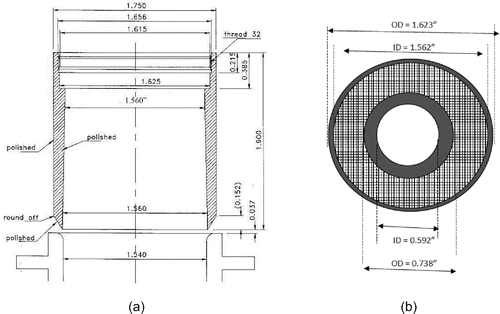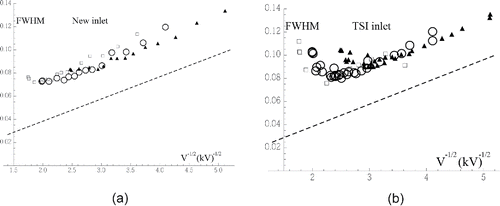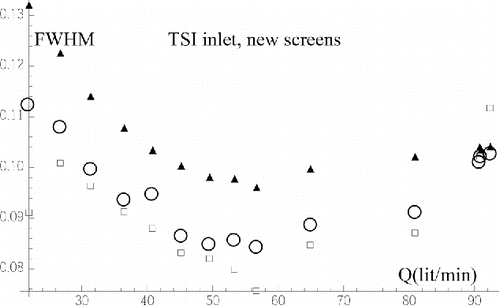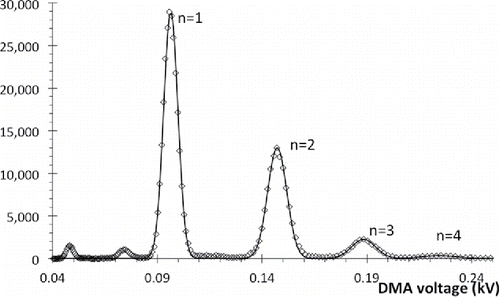Figures & data
Figure 1. Sketches of Eichler's (Citation1997) inlet piece (left) and the new laminarizing screen (right). The new inlet piece is identical to that of Eichler, except that the wetted diverging conical region going from 1.48″ (marked 1.56″ here but actually drawn at 1.48″) to 1.56″ is shaven into a 1.56″ diameter cylinder. All dimensions in inches (″).

Figure 2. Flow rate dependence of the mobility spectrum of IgG. (a) TSI's original 3071 DMA. (b) Step-free screen with new inlet piece (including Gaussian fitting lines).

Table 1. Peak width dependence on sheath gas flow rate Q for two DMA configurations.
Figure 3. Effect of the inlet pieces (PNew, PTSI) on peak width for the singly charged IgG monomers (triangles), dimers (circles), and trimers (squares), with a step-free screen used in both panels. (a) PNew, data from the spectra of , including also dimer and trimer peak widths. (b) PTSI, with performance similar to that of PNew at moderate flow rates, but inferior at Q > 60 lit/min.

Figure 4. Dependence of the peak width of the protein monomer (triangles), dimer (circles), and trimer particles (squares) on sheath gas flow rate Q for TSI inlet piece with the step-free laminarizer. Note a loss of performance above 56 lit/min.

Figure 5. Mobility spectrum for electrosprayed and charge-reduced IgG in the doubly modified 3071 DMA. The peaks labeled n = 1–4 are for protein aggregates from the monomer to the tetramer. The small peaks on the left are for the doubly charged monomer and dimer. The dimer and trimer peaks are narrower than the monomer peak.

